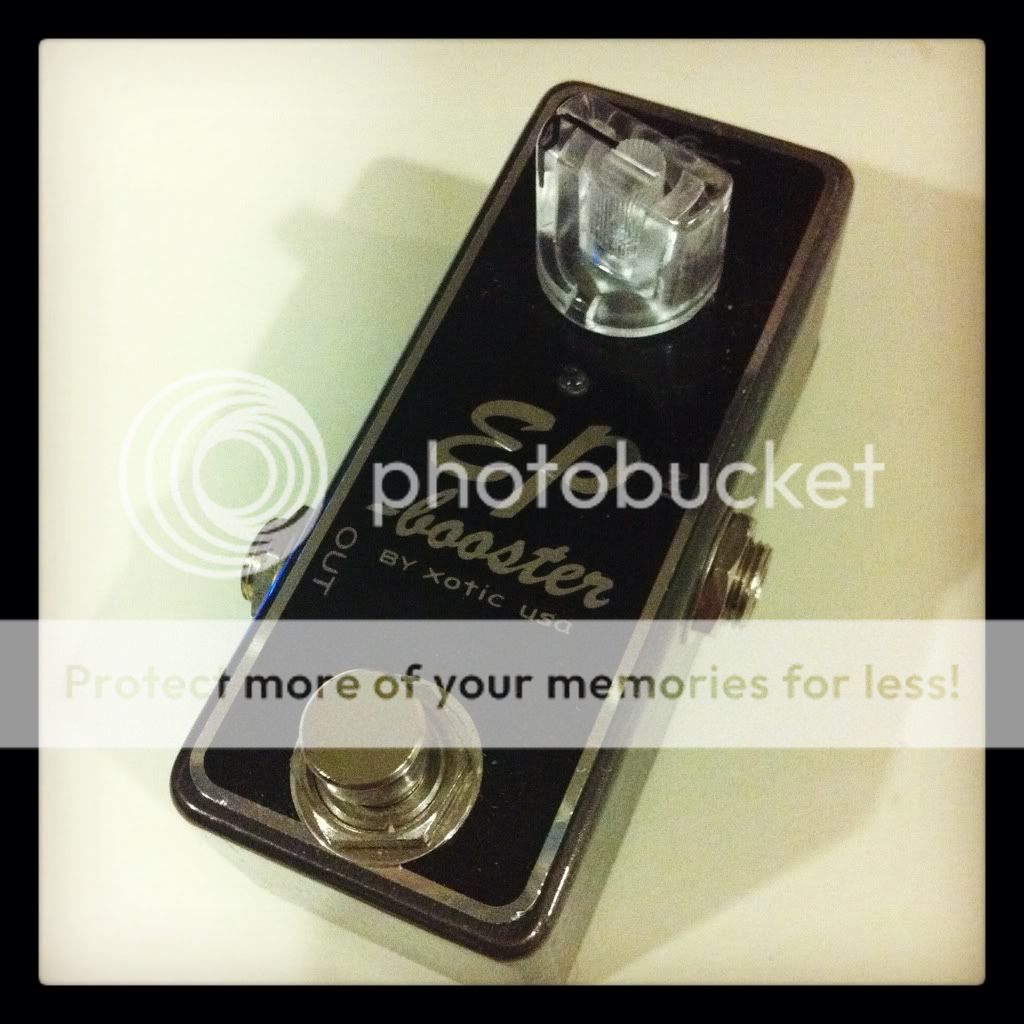I got my hands on another EP Booster. Before labeling me as an excessive tone nut, let me justify why. Xotic came up with two versions of this pedal: Version 1 has a bright switch and a bass boost, while Version 2 replaces the bright switch with a +3dB boost (which in essence is a unity gain switch, because when disengaged, there's no boost). You can run this pedal on anywhere between 9V to 18V, where 9V gets you more gain and compression, and 18V gets you more clarity and headroom. I personally like the sound of 18V, so both my EP boosters are cranked with that voltage.
Now, I normally don't gig with my own amp because it's a 55lb monster, and my pedalboard is set up such that 90% of the tone comes from the pedals, and I run the amp clean with no drive at all. This theoretically means that I can play through solid-states and tube amps alike with little difference in tone.
Here's the problem: solid-states don't have a nice power amp, and tend to sound flat, lifeless, harsh (insert negative terms here) without the warm, fat response I like with a tube-driven power amp (to clarify, I find that even solid-state rectified tube power amps sound great to my ears). So while my first EP Booster is acting like a preamp, I'm using the second EP Booster as a "power amp".
Now, I normally don't gig with my own amp because it's a 55lb monster, and my pedalboard is set up such that 90% of the tone comes from the pedals, and I run the amp clean with no drive at all. This theoretically means that I can play through solid-states and tube amps alike with little difference in tone.
Here's the problem: solid-states don't have a nice power amp, and tend to sound flat, lifeless, harsh (insert negative terms here) without the warm, fat response I like with a tube-driven power amp (to clarify, I find that even solid-state rectified tube power amps sound great to my ears). So while my first EP Booster is acting like a preamp, I'm using the second EP Booster as a "power amp".
Enough anthromorphic babble. Let's jump right into the set up. The rule of thumb with pedals:
- Pedals sound different when placed in various places. For the EP Booster, placing it before overdrive pedals tends to squeeze more gain and compression out of the overdrive.
- Pedals at the last of the chain tend to influence the tone most. When the EP Booster is the last in the chain of overdrive pedals, it provides more clarity and dynamic sensitivity, allowing you to roll back the guitar volume to clean up. With my fingerpicking technique, I can also get a rounder tone using my fingers instead of a pick.
You'd notice that the EP Booster only has one knob, and I'm making it sound like there are many switches to toggle. Well, there are switches; you just can't see them. They're dip switches inside the pedal, so you have to use a screwdriver to dig into the pedal. Let's take a look at the manual for where the dip switches are located:
I managed to flick the switches down with the long bit of my fingernail. Either that, or a simple flathead screwdriver will do the job. Don't worry, these are really tough switches which don't break easily. Let's see how I set this up on my pedalboard:
The Setup
- EP Booster Version 1 - Run at 18V and at "Vintage" settings (both dip switches down)
- Overdrive pedals
- EP Booster Version 2 - Run at 18V at "Unity Gain" settings (don't engage the +3dB switch)
- Volume pedal
 |
| Older setup, mid 2011 |
The volume pedal is essential to getting the tone right with solid state amps. I think it's got something to do with the fact that when you're hitting the front of a solid state with several pedals, a full signal will cause the front-end of the amp to clip. In a tube amp, this sounds great, but with a solid state, it's fizzy, harsh, lifeless (insert more negative terms here). I park the volume pedal at roughly 80% the way up.
Now, after all this time (and money) setting it up, how does this setup fare in real life?
I took this pedalboard to a gig where I used a Line 6 Spider III 30W. Someone came up after the show and asked what amp I was using, expecting it to belong to the "expensive" category of amps. I believe the word "flabbergasted" adequately described the reaction. :P
I haven't tried this out on a Roland Jazz Chorus though, so don't take my word that it works for all solid state amps!
For further reading:
Xotic's Product Page (for the white EP Booster)










0 comments:
Post a Comment